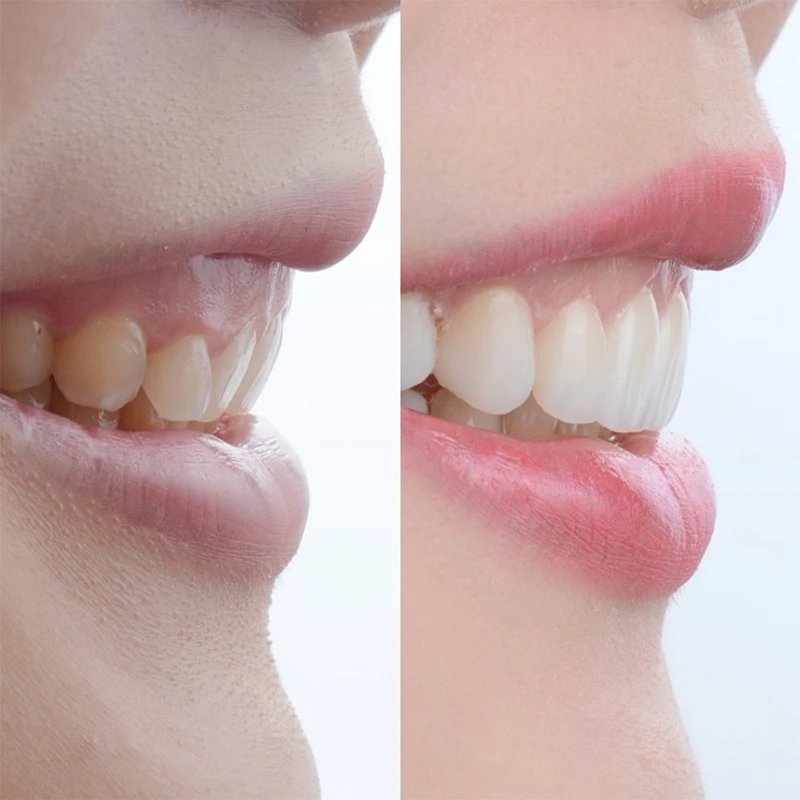
Bone graft or bone augmentation
A bone graft or bone augmentation is one method of treatment that can help make the treatment results more perfect. This will provide treatment in cases where the amount of jawbone is incomplete or insufficient, such as implants, correction of facial asymmetry, etc. As for the bone that will be implanted, it depends on the discretion of the dentist providing treatment. In selecting the type of material to be used that is appropriate to the anatomy of each patient.
Currently, bone grafting can be performed in conjunction with dental implants. As for the bone used, the dentist may use the patient's own bone. or use synthetic bone. It depends on the adequacy and appropriateness of the nature of the work being done.


Does everyone need a bone graft?
If you want to have dental implant surgery, you can make an appointment to consult a dentist. To plan and evaluate the readiness of the bone to support the implant first. In order to know whether we need a bone graft or not, the dentist will evaluate each person's mouth and tooth-supporting bones. However, the most detailed evaluation at present is a CT scan, which will allow us to know the details of the jawbone structure. which is accurate and used in treatment planning.
Types of bone replacement (Bone graft)
Currently, there is medical technology that can find a variety of bone replacements. There are mainly four types of bone replacements:
1.Allografts : Bone from the same species is bone from a donor that has been sterilized. and sterilized, then they are lifeless bone cells. Therefore, this type of bone graft will be at risk if the body resists it. This causes the bones to not stick together very often. And there is no need for surgery or other additional corrections.
2.Autograft : Bone from a patient is a surgery where bone is harvested from another area of the patient. It is planted in the area where the dental implant will be placed. The advantage is that it is the patient's own bone. has its own cells. The body will not resist. But the disadvantage is that the patient may have wounds in many places. which is a popular position to collect. It is the jaw bone around the wisdom teeth and chin. Collecting bone in this way can be done in various forms, such as pieces (block bone graft) or powder (particulated), etc.
3.XenoGraft : Bone from another living creature is bone from an animal that has been processed in a sterile way. which has a complicated process, therefore causing the price of bones to be high. But the advantage of this type of bone is that it dissolves slowly. This makes it the first choice for dentists to perform bone grafting.
4.Alloplast : synthetic bone made from calcium, phosphate, or ceramic. The bone that will be grafted It depends on the discretion of the dentist providing treatment. In selecting the type of material to be used that is appropriate to the anatomy of each patient.
Currently, bone augmentation Bone grafting has become so important that it is almost included in the preparation process for dental implants. This is because people who receive dental implants usually have insufficient bone in their jaws to support the implants. This is caused by the deterioration of the bone supporting the teeth after losing teeth in that area. In some cases, jawbone degeneration can affect a person's facial structure, making them look older. In the past, solving the problem of bone quantity for dental implants was difficult. But today, with the development of technology, bone grafting can be done with a simple procedure to achieve the desired size and quantity. This increases the stability of titanium implants even more.
Bone grafting along with dental implants
Nowadays, bone grafting can be done simultaneously with dental implants. As for the bone used, the dentist may use the patient's own bone. or use synthetic bone. It depends on the suitability and nature of the treatment. This method has the advantage that the patient does not have to waste time visiting the dentist many times.
What is gum cutting combined with bone grinding (Crown Lengthening)?
Gingivectomy combined with crown lengthening involves surgery on the gum edge along with grinding to reduce the height of the bone edge at the gum base. Can permanently correct a smile that shows lots of gums. When the surgery is complete, the wound must be stitched and closed. Then come back and cut the stitches as the dentist recommends. Cutting the gum edge along with grinding away some of the bone edge under the gums. It will make the treatment results permanent. Gums will not grow back again. Only the recipient of the treatment must take good care of the health of their gums and teeth. And visit the dentist regularly to check your oral health. At least every 6 months if the recipient does not take care of their oral health as well as they should. It can cause various oral diseases such as tooth decay, swollen gums, receding gums, and tooth decay, which cause the gum levels to be unevenly high and low. This will make it difficult to fix. or can be treated to make it as good as before.
Things you should know before deciding to have gum surgery combined with bone grafting
Gum cutting combined with bone grinding causes wounds and inflammatory processes like normal. Therefore, those receiving treatment must not have any underlying diseases. that affects wound formation, wound healing, or allergy to anesthetics, so the patient must inform the dentist before treatment. Smiling with lots of gum showing can be caused by many reasons. In some cases, it may be necessary to correct it with braces.
Care after gum surgery combined with bone grinding
- After cutting the gums together with bone grafting, it will take 3–4 weeks for the wound to gradually heal. The patient may feel pain or tightness in the area of the wound. There is a slight swelling. And there may be tooth sensitivity as well.
- Brush your teeth and clean your gums gently and regularly, two times a day.
- Eat soft foods; avoid spicy foods, hot foods, and drinks. alcoholic beverages Including refraining from smoking.
- You may need to take time off work after gum surgery with bone grafting and refrain from exercising while waiting for the wound to heal.
- You must come back to have the stitches cut with the doctor 2 weeks after the procedure (in the case of stitches), and you must take the medicine as prescribed by the doctor.

